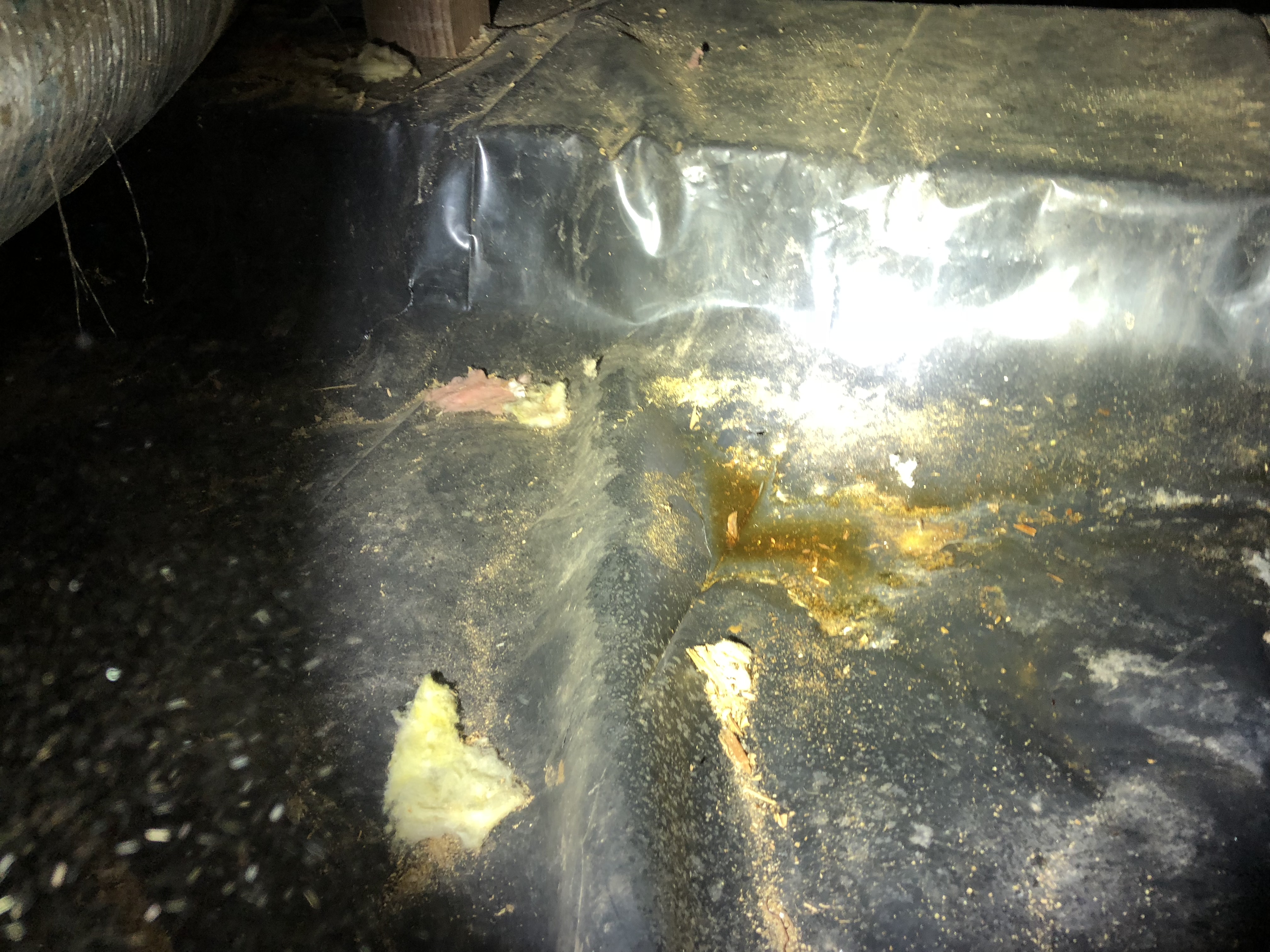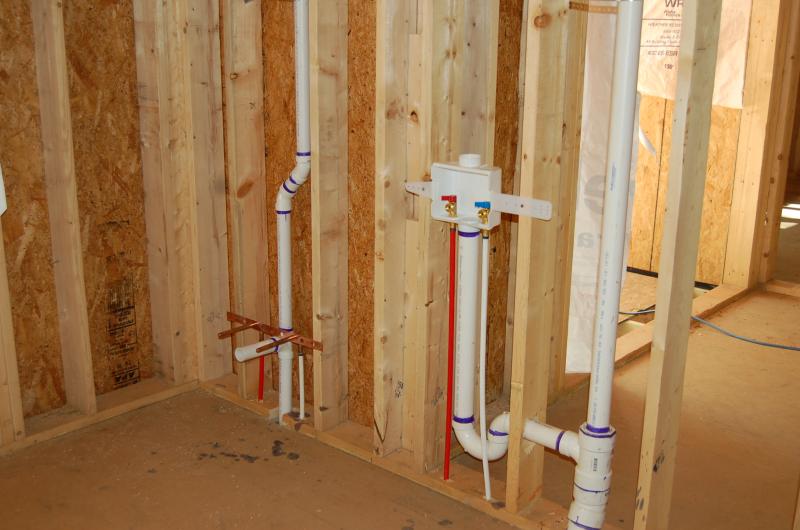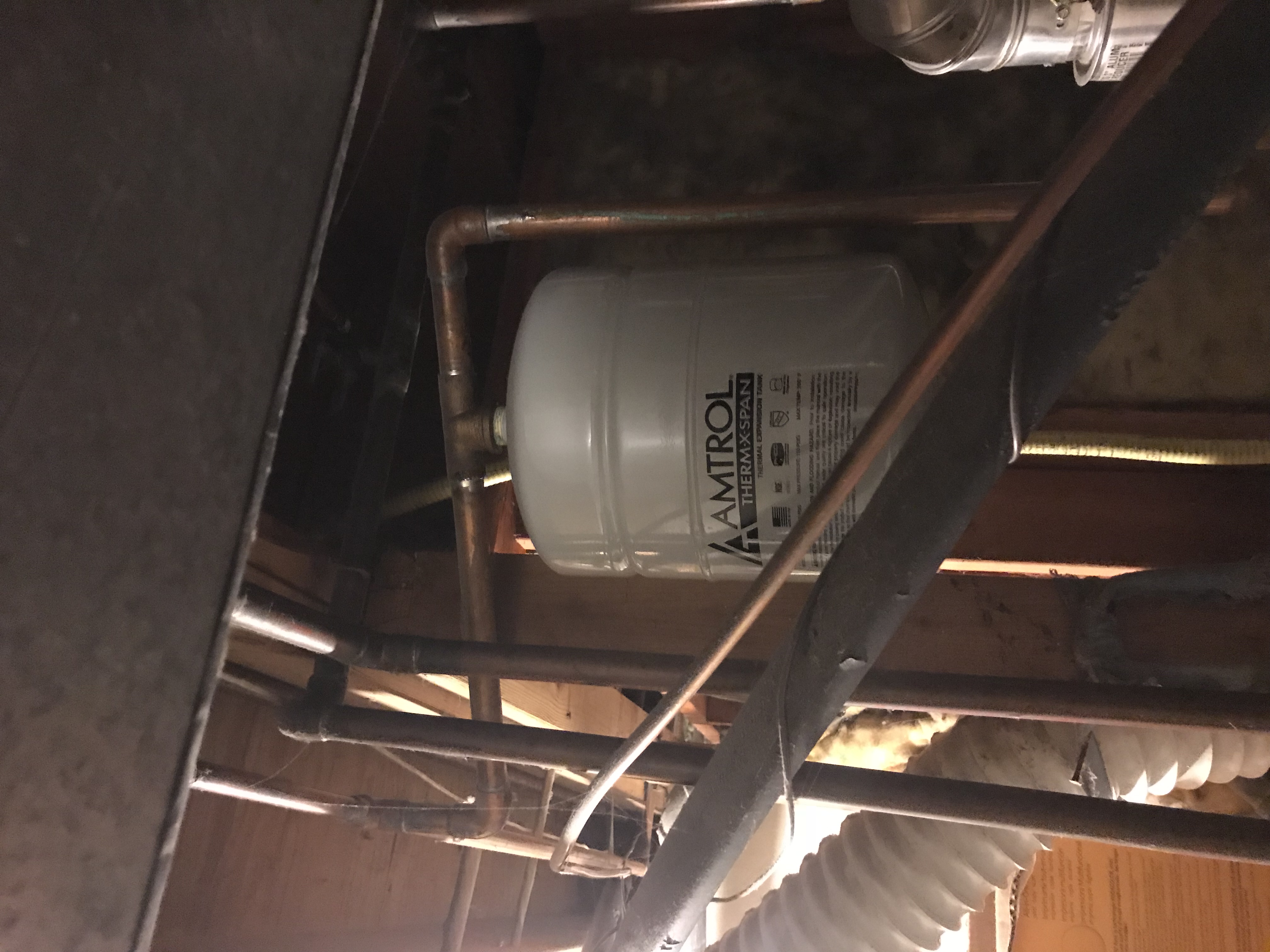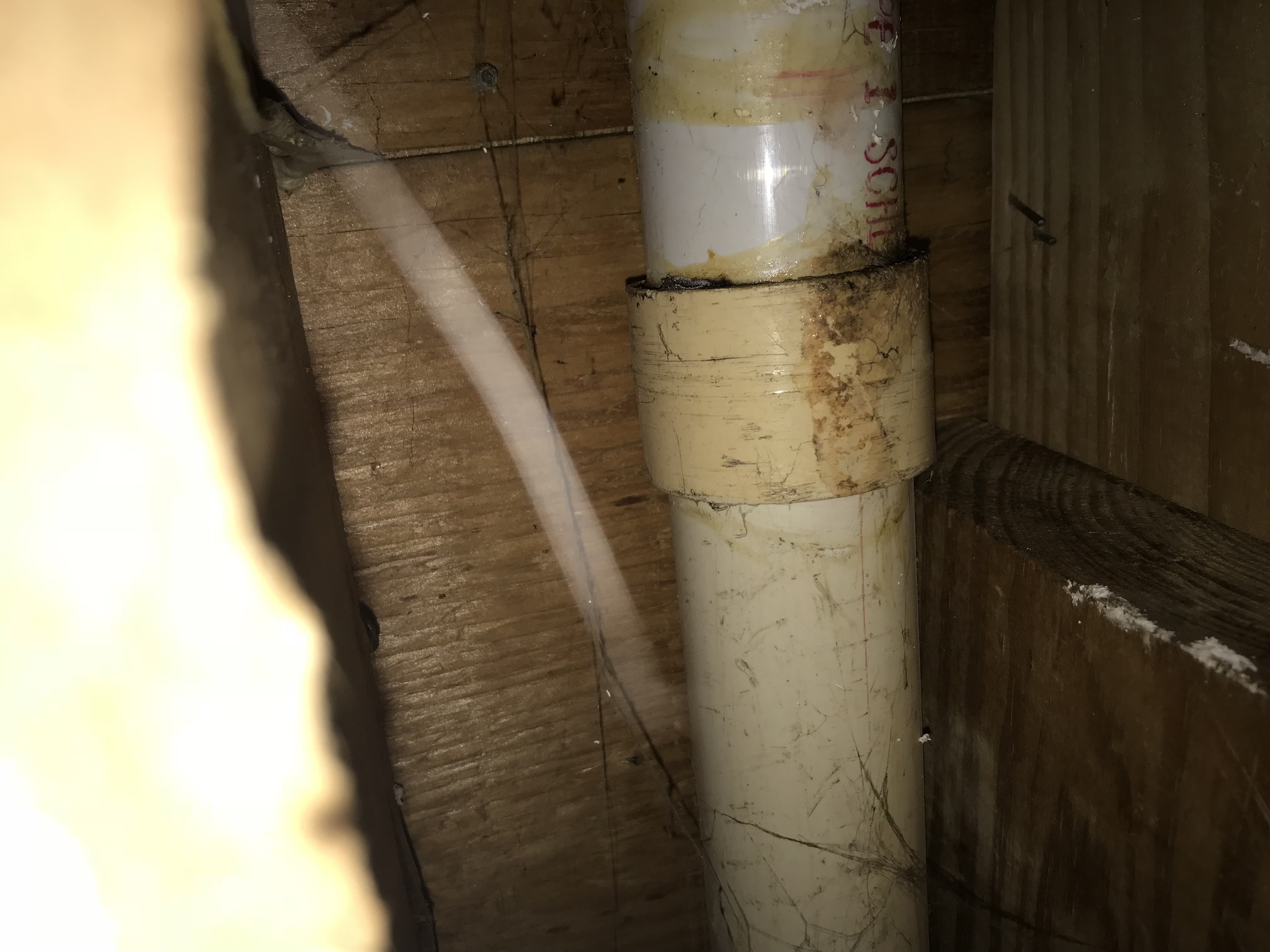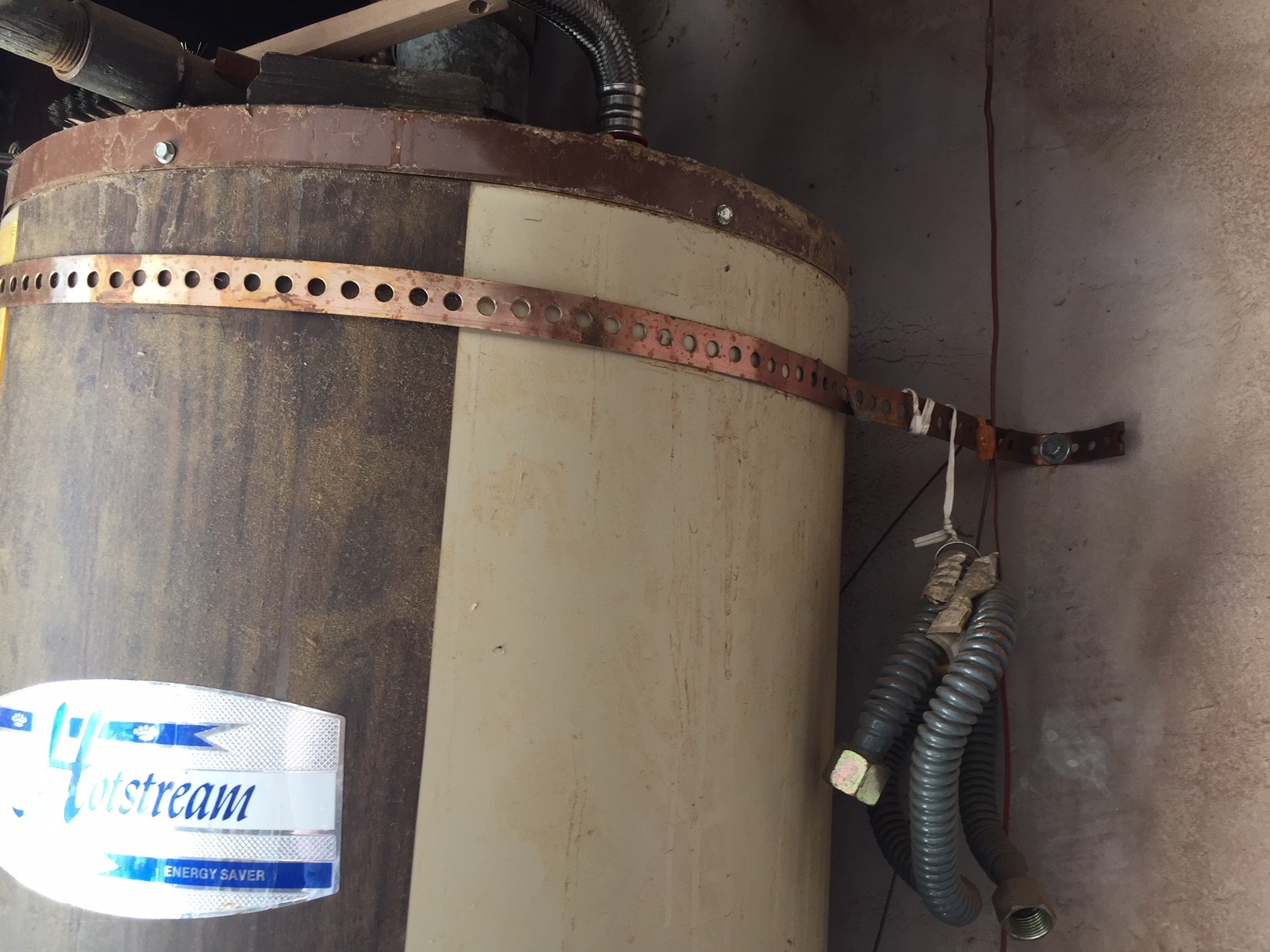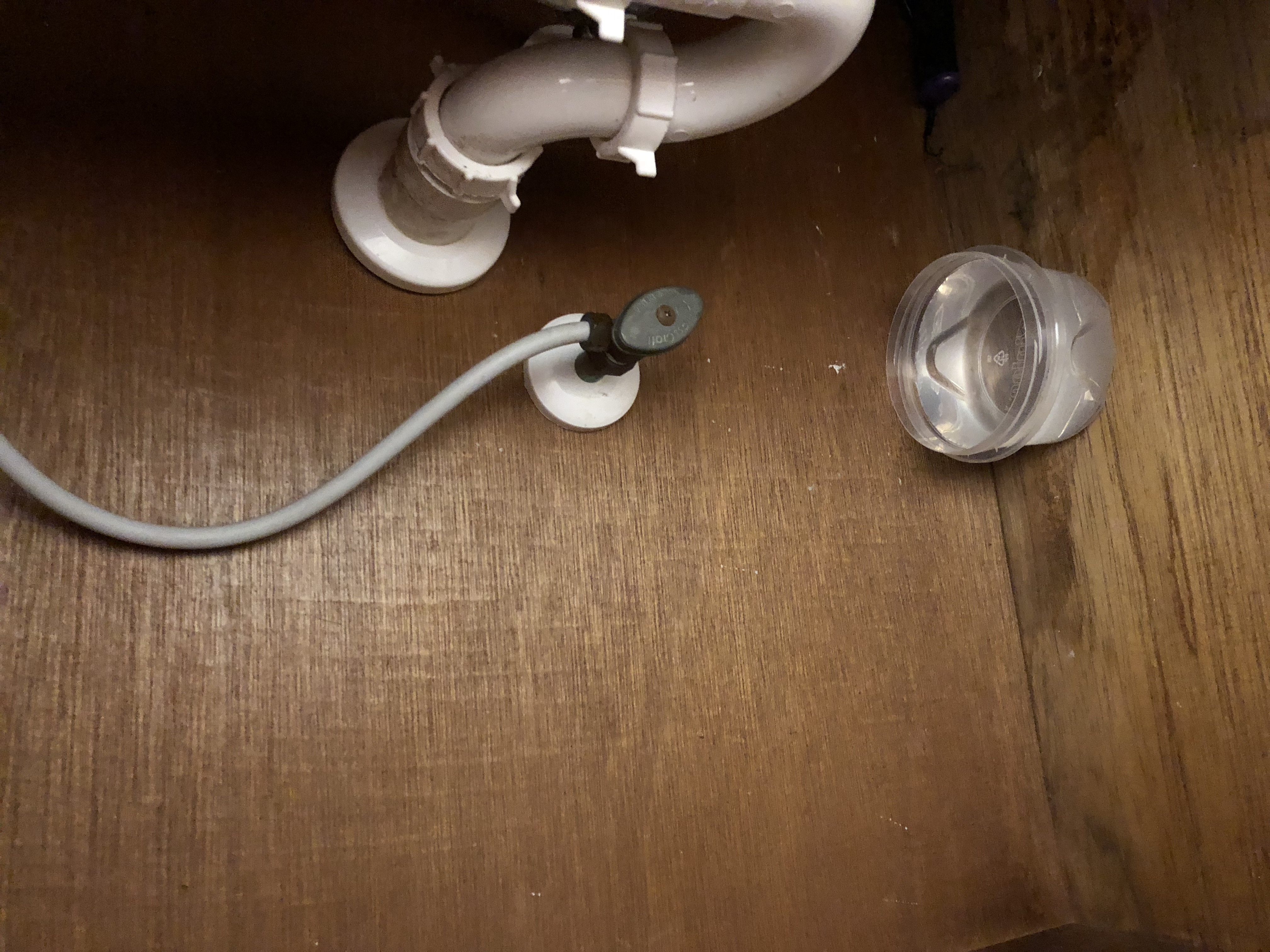During an inspection of a crawlspace I came across a pool of stained water. Upon further investigation I determined the leak was coming from an area behind the wet insulation above. I pulled back the side of the insulation to find a leaking shower drain fitting. The shower drain was leaking from the flange area.
I read “Marijuana Grow Operations” and learned that a huge amount of moisture is introduced into the air of the home causing everything from mold to damaged shingles. The article stressed that vast amounts of electricity is also used potentially straining the electrical system.
The attached picture shows the rough in plumbing for a washing machine. The plumbing include the correct P-Trap with the proper specs with the trap size at 2 inches. The vertical distance from the fixture outlet to the trap weir, the horizontal distance from a fixture to the trap, and the standpipe all appear to be within code.
Dryer vent safety is a simple yet vital part of the home inspection. While the inspector may not be aware of the various dryer OEM installation specifications, the inspector should pay close attention and notate any observed related areas which could lead to a house fire.
The a sense of seismic bracing was noted at the water heater expansion tank. Current standards recommend that seismic bracing be attached from the expansion tank to a floor hoist or side wall, in order to alleviate the weight of the expansion tank fro any pipes or fittings.
My essay is on the article Estimating the life span of a water heater. The essay spoke about the correct installation of water heaters, as well as the ideal areas for installation. It explained about heavier usage equaling more wear on the water heater, with higher water volume also equaling higher corrosiveness. It spoke about construction quality being a big factor in longevity. Finally it spoke about how maintenance and care factor into water heaters life span.
The picture that I uploaded is of a leaking pipe. The pipe was a connected to the sump pump. When I tested the pump, the pipe began to leak. It was hidden in a basement wall, but a hole had been put in the wall to make a previous repair. It looks like the previous repair did not work very well.
The trap in this picture is an “S” trap. These traps are illegal to use. the designs may lead to future problems with the drainage system. The design of the s trap is flawed because it has the potential to siphon the water down the piping by suction created in pipes.

I chose the article “Bidets”. I learned that a bidet is a toilet-like plumbing fixture designed to promote proper hygiene. They are common in Asia and Europe. I also learned that they are becoming common in North America. I personally have not seen a bidet in America, only in Europe.
This hot water heater was located in the attached garage. This home is located in an area known for earthquakes. The heater was not properly secured to the wall with correct seismic straps. The seller was notified that this would need to be corrected.
Learning about water heaters is very informational. Most importantly, learning how to determine the age, correct location and requirements off floor, correct strapping requirements, vent requirements, TPR valves, different types and linings. This section has given me alot of insight for performing inspections
The overflow is an important part of the bathtub/sink. It allows water to drain before it leaks over the rim of the bathtub/sink. It also has a stoppable drain that will allow the water to drain after a shower once you open it.
A water heater uses one of many energy sources to heat water and distribute it throughout the home. The water heater has multiple uses in a home, including washing clothes, bathing and cooking. This water heater in particular uses natural gas to heat the water.
I read an article about water heater expansion tanks. Expansion tanks are used in residential homes to help accommodate fluctuations in the buildings hot water supply. The design pressure for the tank will be label on the outside on the tank. Most residential tanks are rated for 150 PSI.
This a picture of a standard bathroom vanity showing the plumbing connections for the supply lines and pvc piping for drainage connections.There was no sign of leaks on connectors,pvc piping or bottom of cabinet.Also supply lines were connected propertly with hot water on the left and cold on the right.
The dryer vent in this photo is defective and in need of repair. It bends 90 degrees in two separate locations, making its total length too short for the state requirements, and needs to be fixed anyway as it is broken.

When I inspect a sump pump, I start by making sure it is operating safely and efficiently. I look for signs of deterioration or clogging, and I make sure it has all required safety precautions in place. I do not always require that it is plugged into a GFCI outlet, as this is a debated aspect of sump pump maintenance amongst inspectors.
Visually observed a leak at the connection of the hot water valve under the sink in bathroom 2. Noticeable water stain on floor of cabinet as well as bowl catching water dripping. Recommend repair or replacement by a qualified plumbing professional.
From our Standards of practice:
“The inspector is not required to:
A. light or ignite pilot flames.
B. determine the size, temperature, age, life expectancy or adequacy of the water heater.
C. inspect theinterior of flues or chimneys, combustion air systems, water softener or filtering systems, well pumps or tanks, safety orshut-off valves, floor drains, lawn sprinkler systems,or fire sprinkler systems.
D. determine the exact flow rate, volume, pressure, temperature or adequacy of the water supply.
E. determine the water quality, potability or reliability of the water supply or source.
F. open sealed plumbing access panels.”
When checking to see if a chimney has proper clearance from the roof you should use the 3-2-10 rule. The chimney must terminate three feet from the roof, or two feet above any structure within ten feet horizontally. But be sure not to confuse the 3-2-10 rule for chimneys with the 2-2-10 rule for gas vent pipes.
